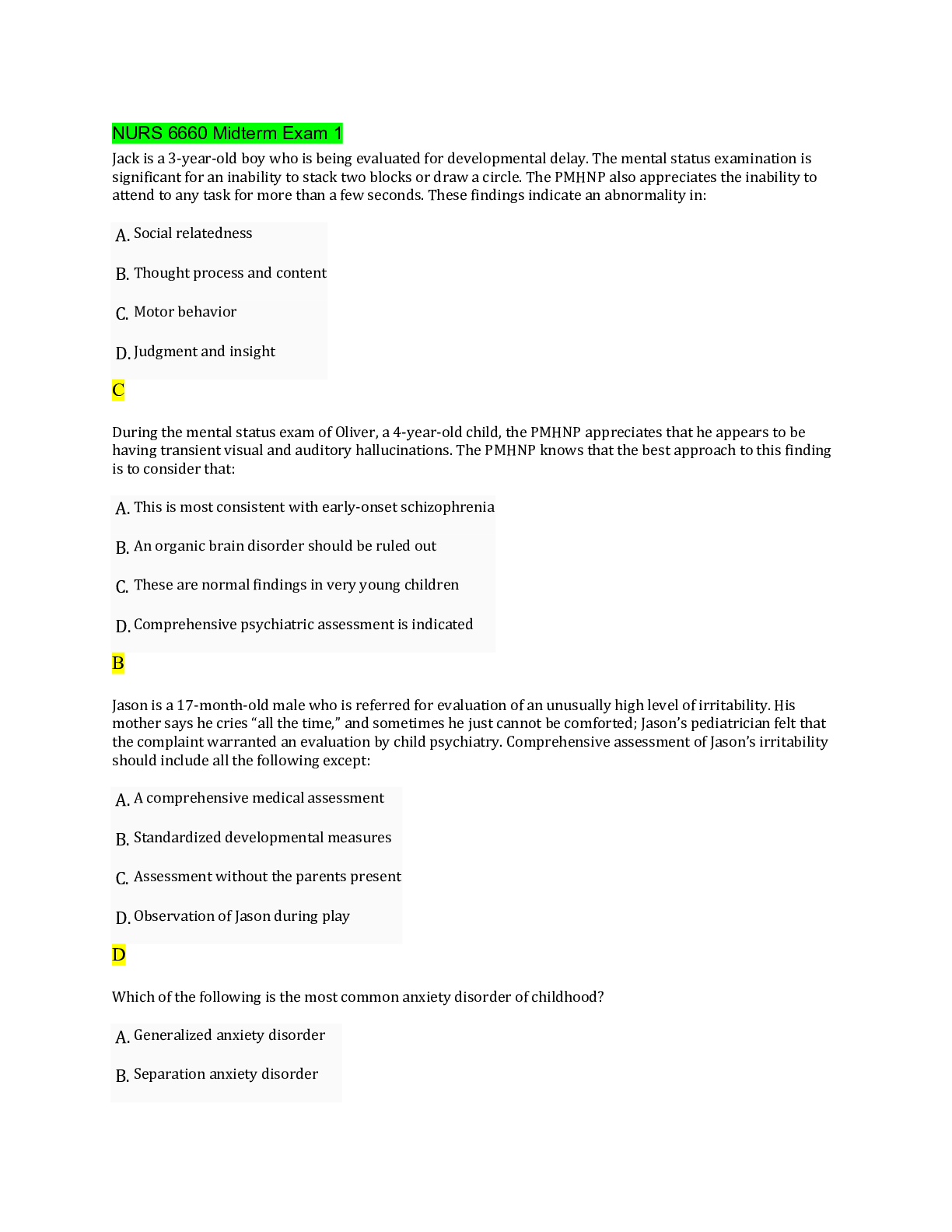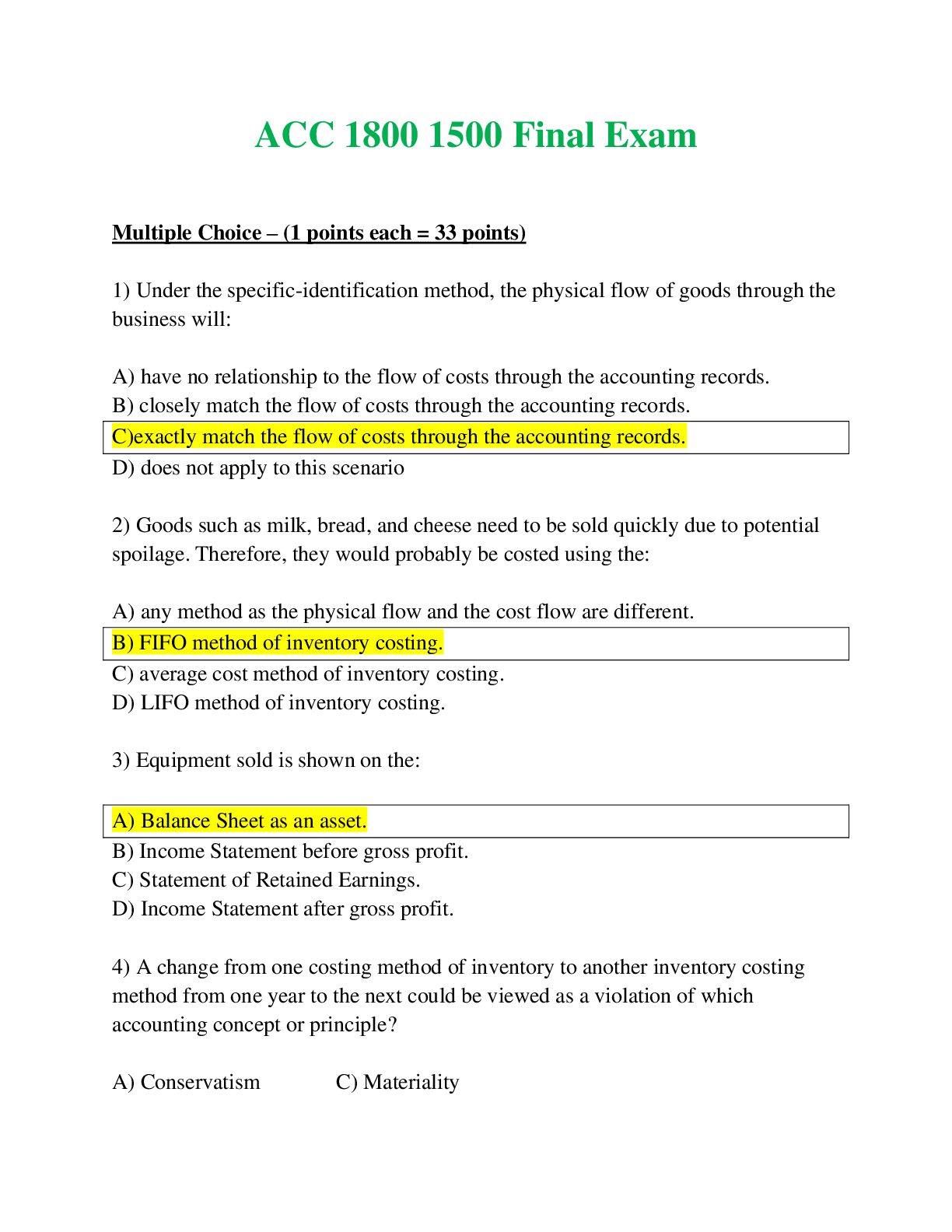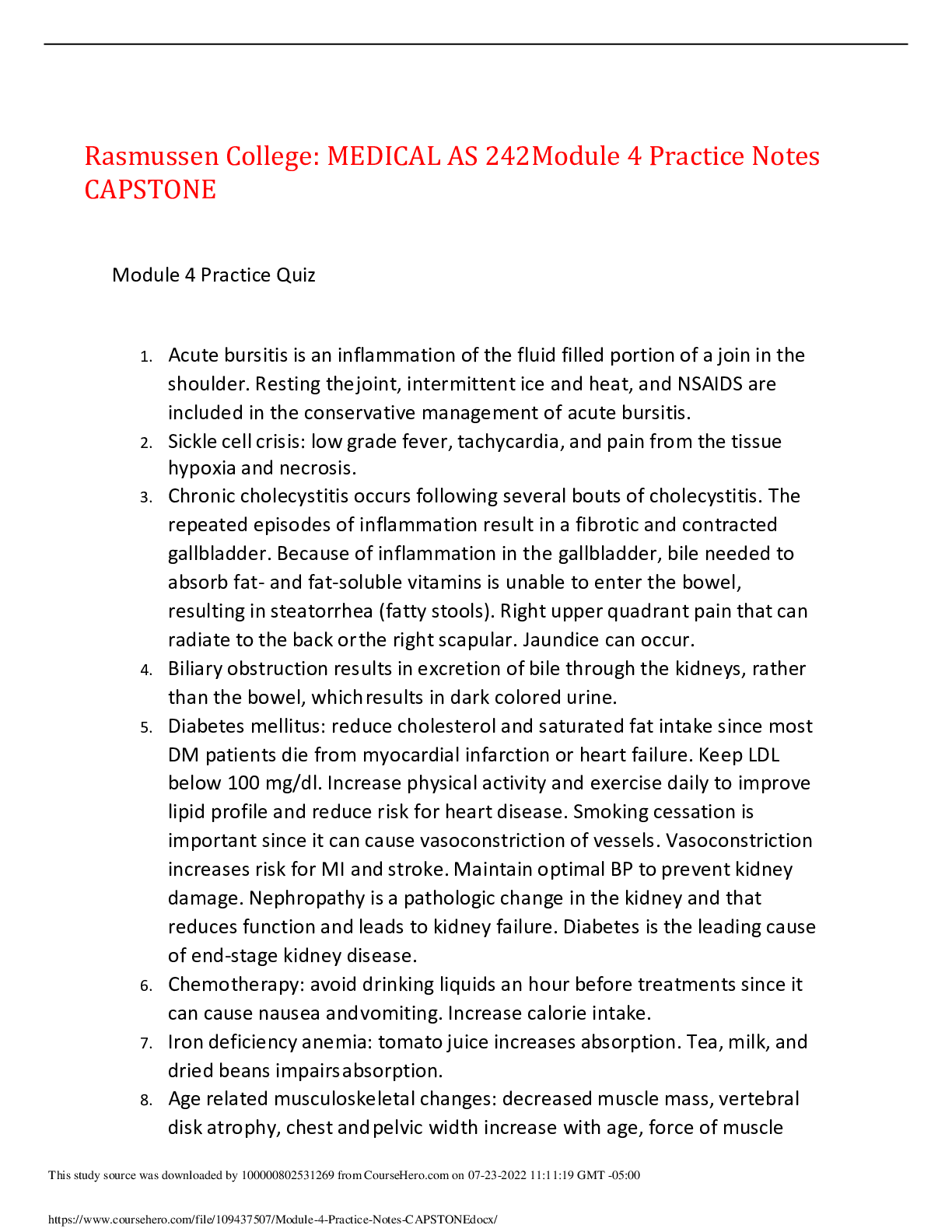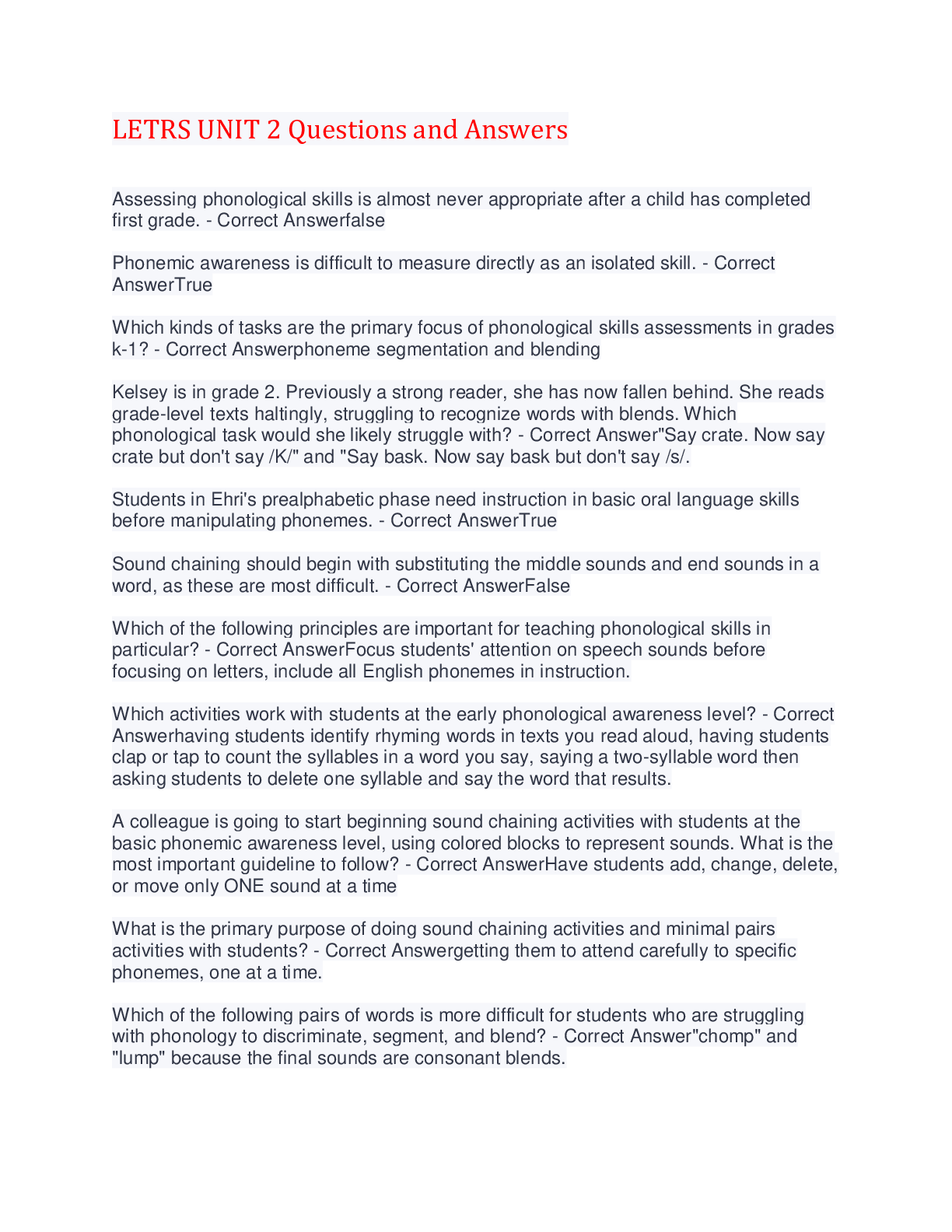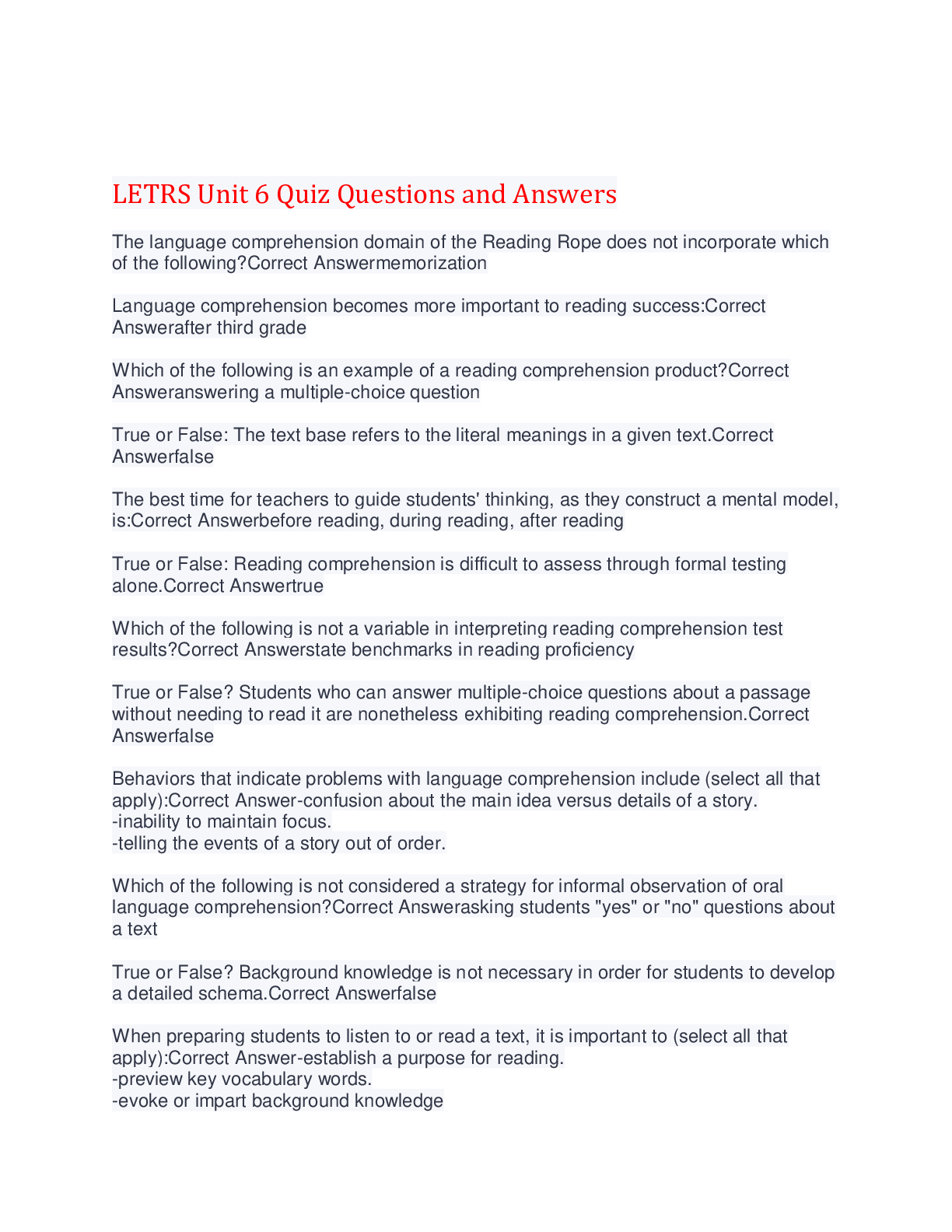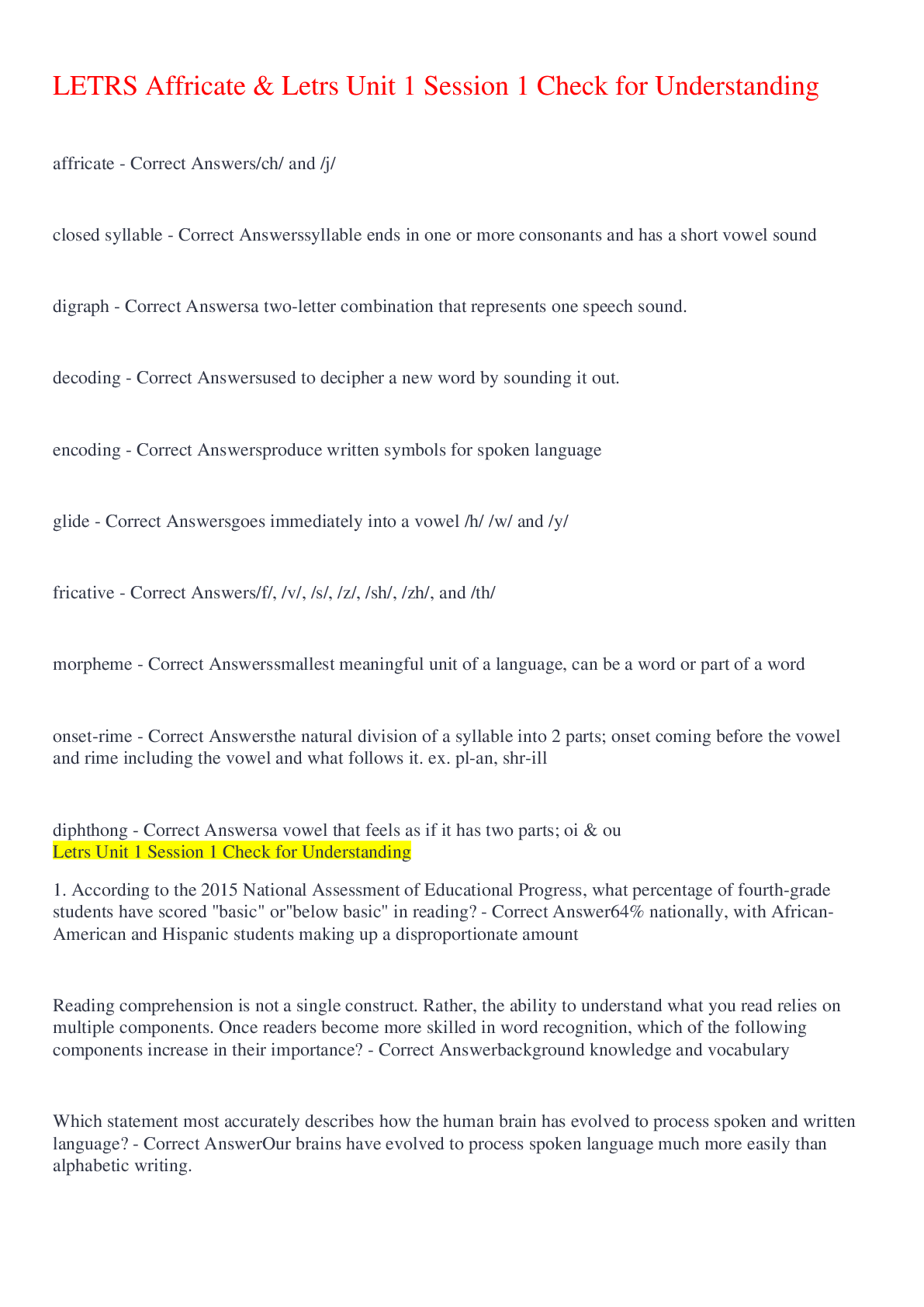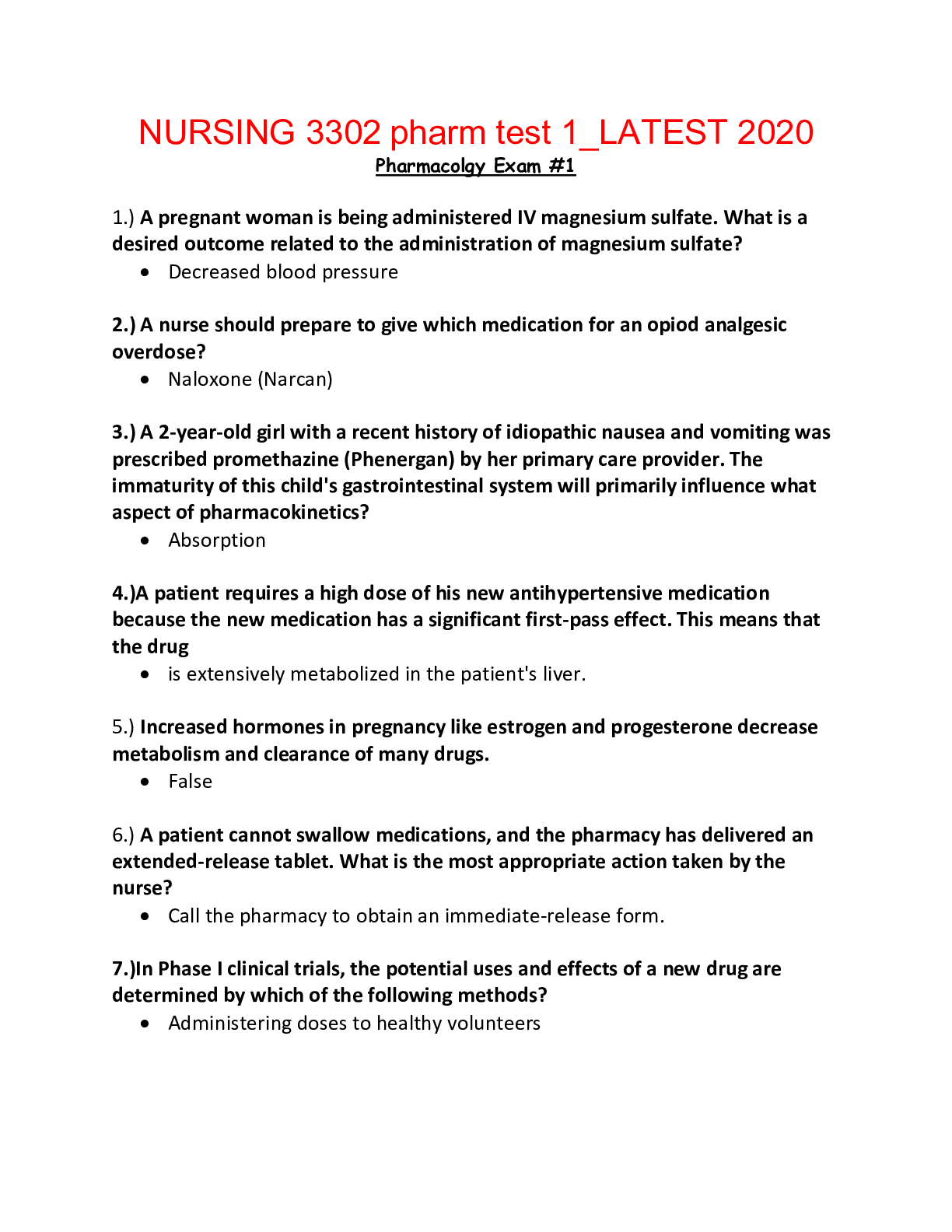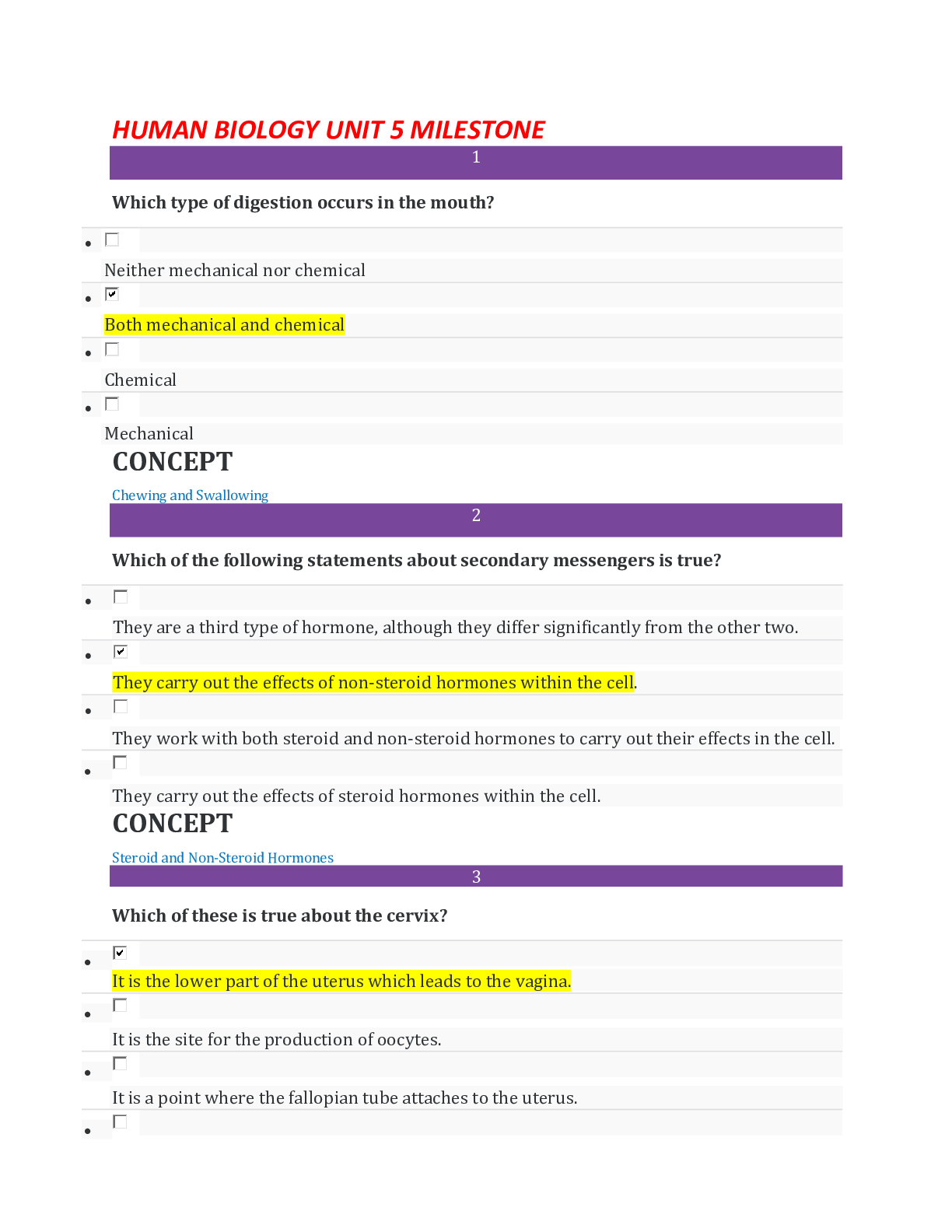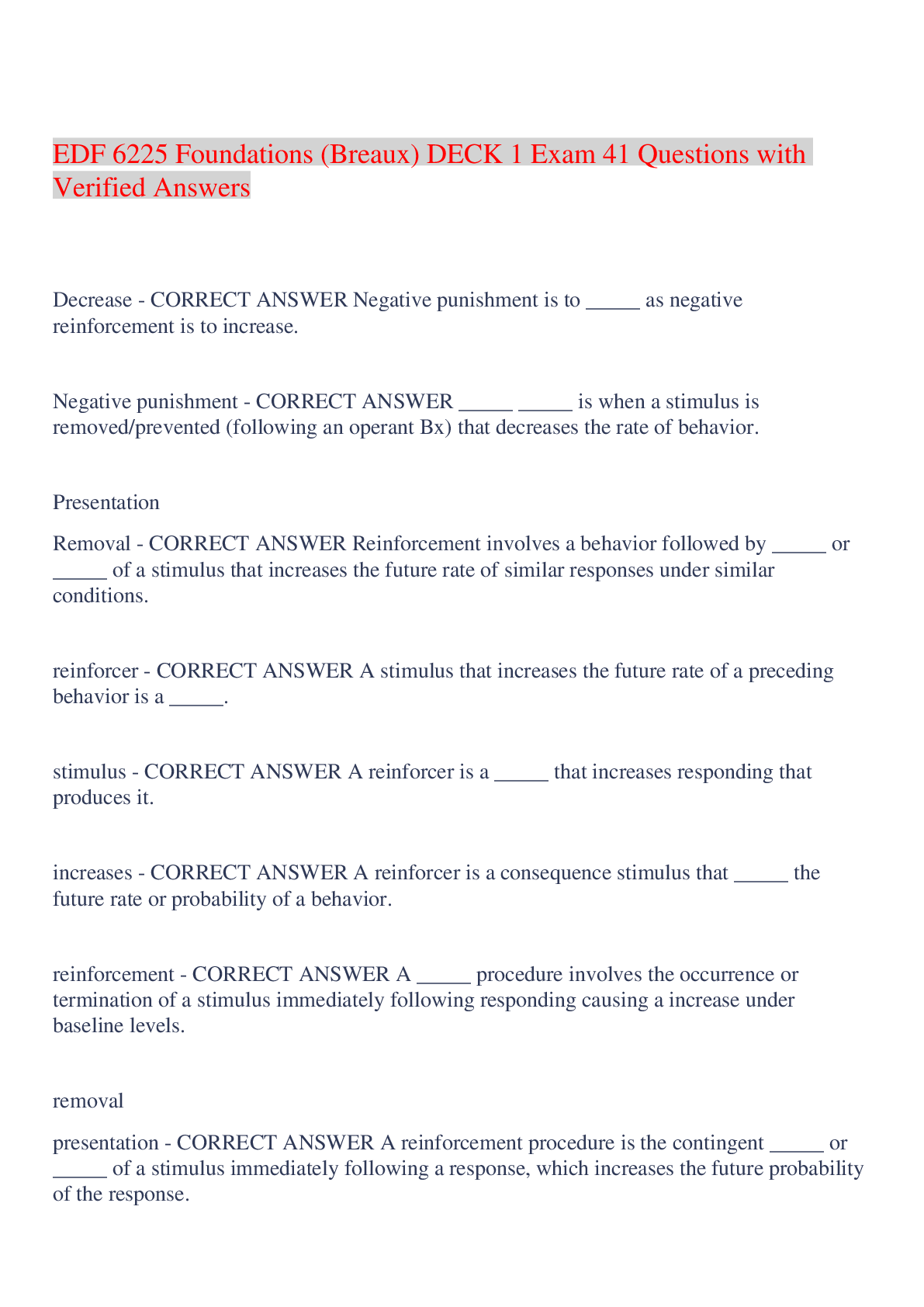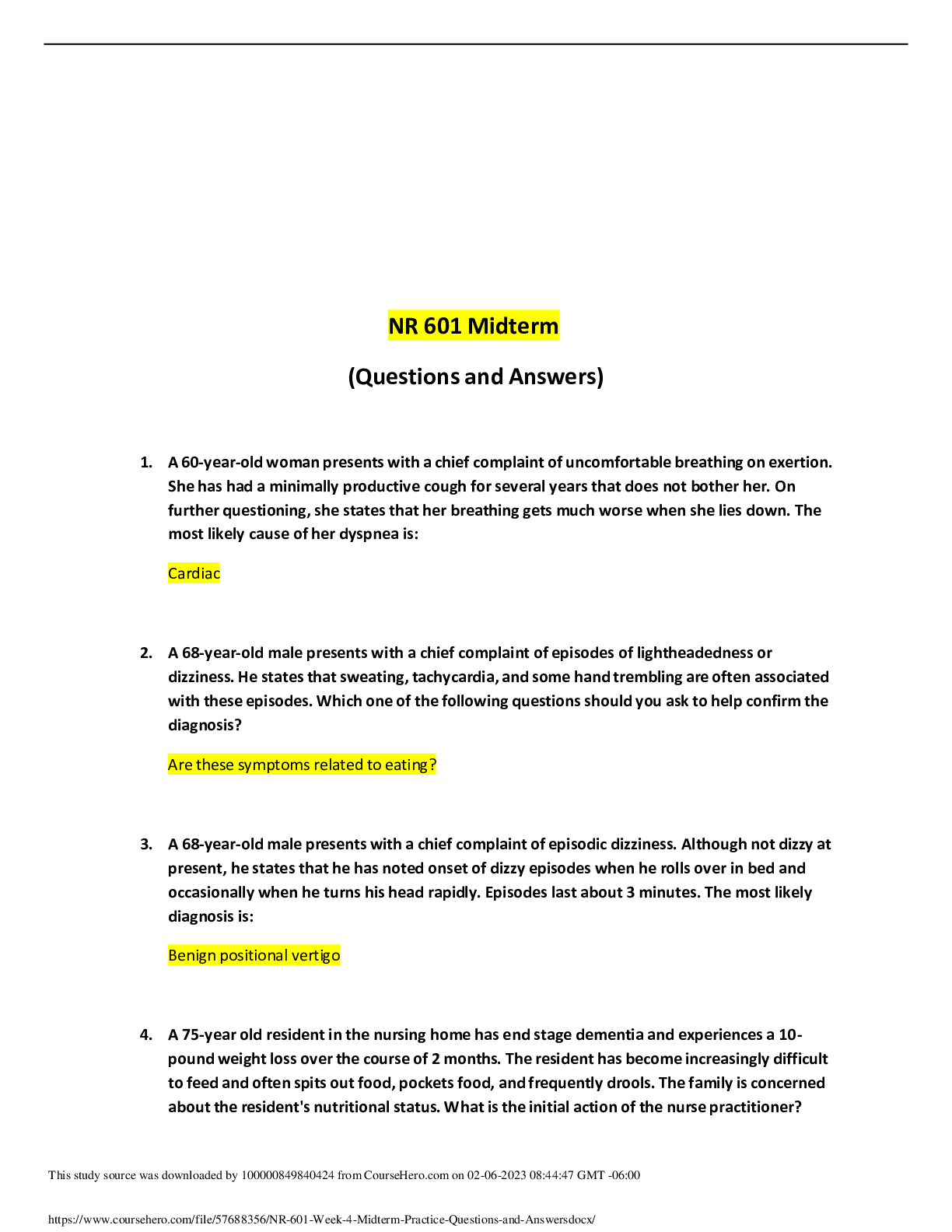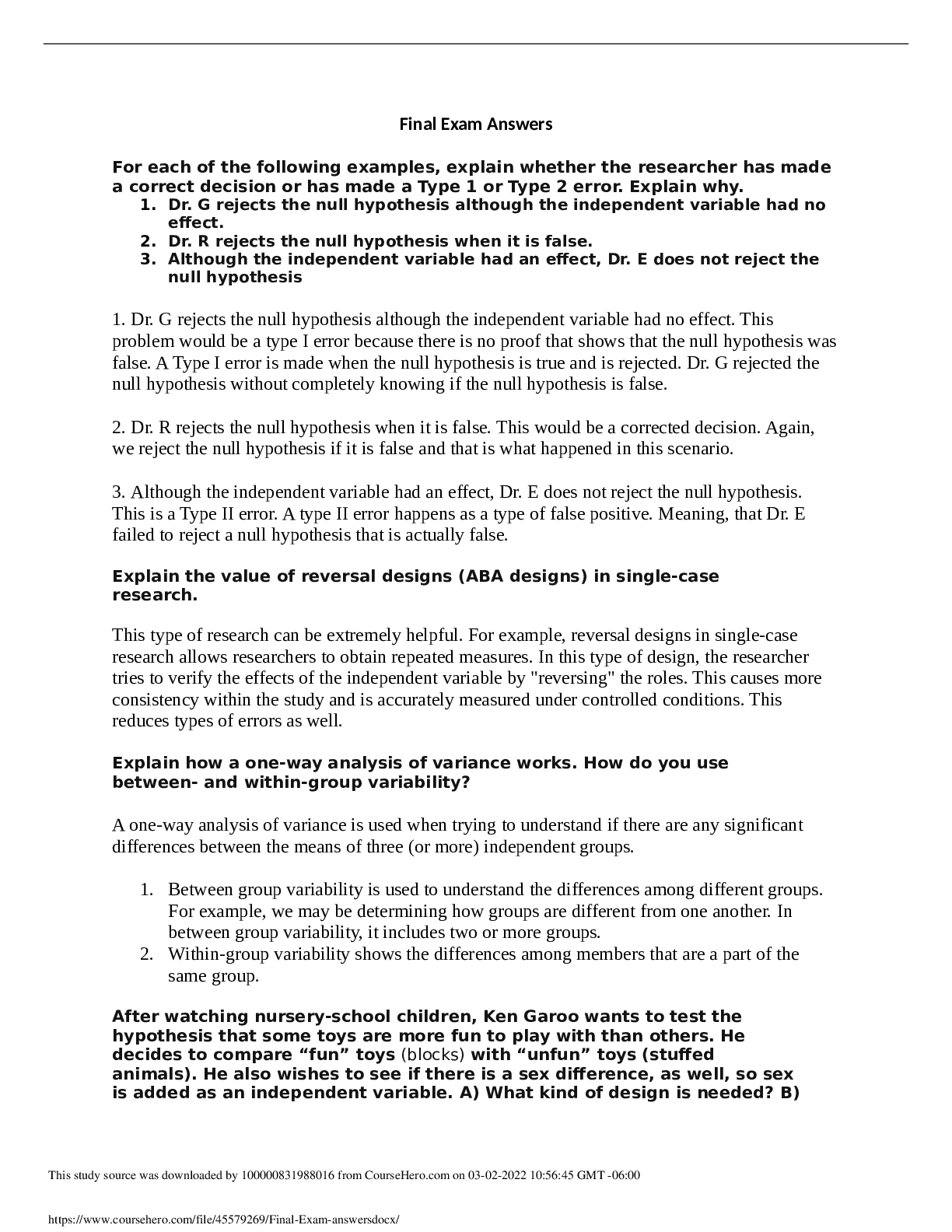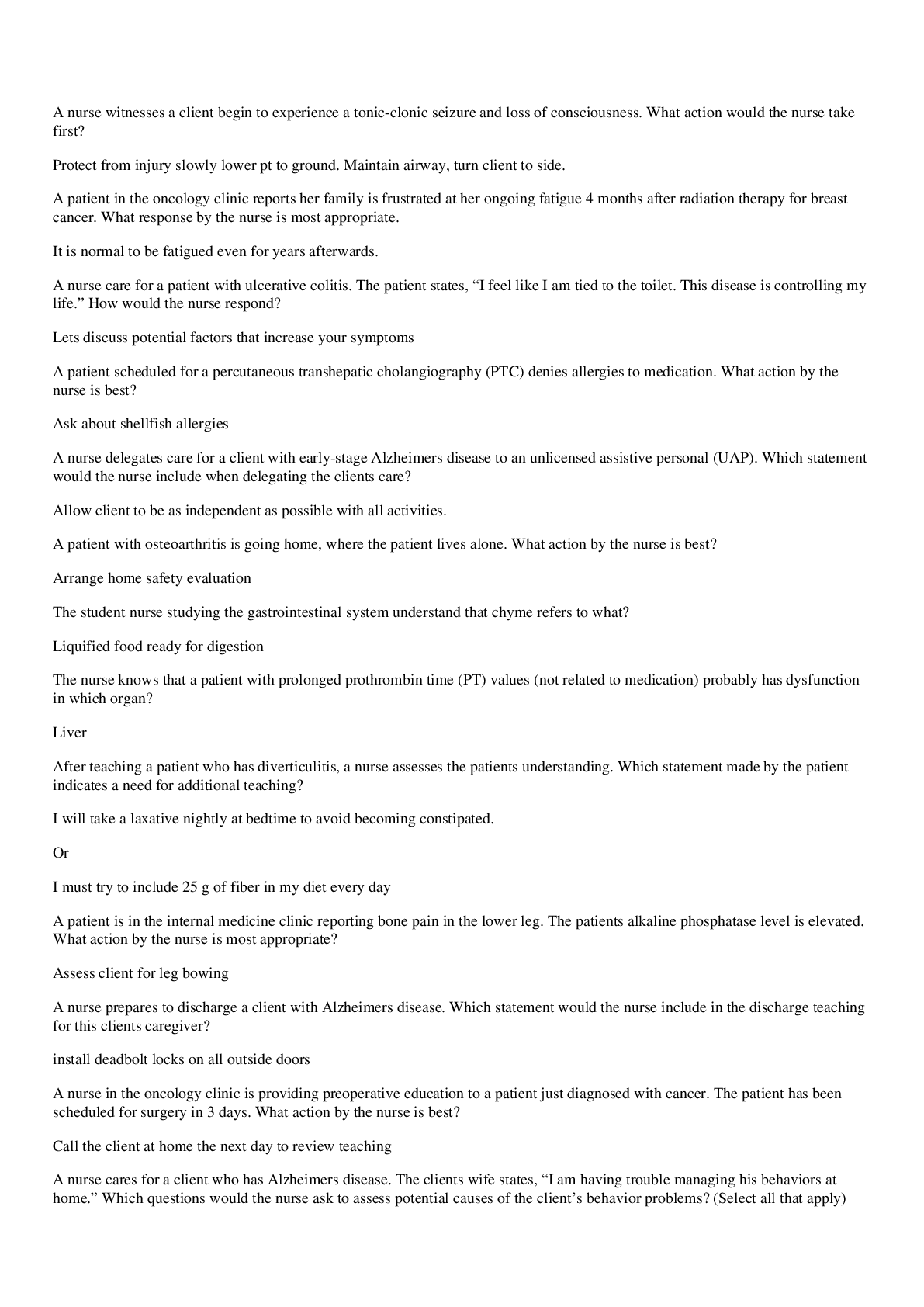NR 283 Pathophysiology Quiz 1 Questions and Answers,100% CORRECT
Document Content and Description Below
NR 283 Pathophysiology Quiz 1 Questions and Answers 1. Pathophysiology involves the study of: a. the structure of the human body. b. the functions of various organs in the body. c. functi... onal or structural changes resulting from disease processes. Correct d. various cell structures and related functions. 2. The number of new and old or existing cases in a specific population within a specified time period is called: a. prevalence. b. occurrence. c. incidence. d. abstinence. 3. The term prognosis refers to the: a. period of recovery and return to a normal state. b. expected outcome of the disease. Correct c. mortality and morbidity rates for a given population. d. typical collection of signs and symptoms. 4. The manifestations of a disease are best defined as the: a. subjective feelings of discomfort during a chronic illness. b. signs and symptoms of a disease. Correct c. factors that precipitate an acute episode of a chronic illness. d. early indicators of the prodromal stage of infection. 5. A short-term illness that develops very quickly with perhaps a high fever or severe pain is called: a. latent. b. chronic. c. manifestation. d. acute. Correct 6. A situation when there is a higher than expected number of cases of an infectious disease within a given area is called a/an: a. epidemic. Correct b. exacerbation. c. morbidity. d. pandemic. 7. A deficit of oxygen in the cells usually due to respiratory or circulatory problems is called: a. apoptosis. b. ischemia. Correct c. hypertrophy. d. necrosis. 8. Which of the following is the best definition of epidemiology? a. The science of tracking the occurrence and distribution of diseases Correct b. The relative number of deaths resulting from a particular disease c. Identification of a specific disease through evaluation of signs and symptoms d. The global search for emerging diseases 9. A change in a tissue marked by cells that vary in size and shape and show increased mitotic figures (proliferation) would be called: a. metaplasia. b. atrophy. c. dysplasia. Correct d. hypertrophy. 10. Which of the following is usually included in a medical history? 1. Past illnesses or surgeries 2. Current illnesses, acute and chronic 3. Prescribed medication or other treatments 4. Nonprescription drugs and herbal remedies 5. Current allergies a. 1, 3 b. 2, 4, 5 c. 1, 3, 4 d. 1, 2, 3, 4, 5 Correct 11. When the hydrostatic pressure of the blood is elevated above normal, water would shift from the: a. blood into the interstitial compartment. Correct b. interstitial compartment into the cells. c. interstitial compartment into the blood. d. cells into the interstitial compartment. 12. The control center for thirst is located in the: a. kidneys. b. thalamus. c. medulla. d. hypothalamus. Correct 13. In the blood and extracellular fluids, hypernatremia refers to: a. a deficient sodium level. b. an excess phosphate level. c. an excess sodium level. Correct d. an excessively low phosphate level. 14. Hypocalcemia causes weak cardiac contractions because: a. permeability of nerve membranes increases. b. insufficient calcium ions are available for muscle contraction. Correct c. low phosphate ion levels prevent muscle contraction. d. excessive amounts of calcium are stored in cardiac muscle. 15. Which of the following is a common cause of hyponatremia? a. Excessive sweating Correct b. Excessive aldosterone secretion c. Prolonged period of rapid, deep respirations d. Loss of the thirst mechanism 16. Which of the following would cause edema? a. Decreased capillary hydrostatic pressure b. Increased capillary osmotic pressure c. Decreased capillary permeability d. Increased capillary permeability Correct 17. Increased milk and/or antacid intake can contribute to development of “milk-alkali syndrome,” which can cause which of the following? a. Hyponatremia b. Hyperkalemia c. Hypercalcemia Correct d. Hypovolemia 18. Hypokalemia refers to a condition in which the serum has a very low level of which ion? a. Sodium b. Phosphate c. Calcium d. Potassium Correct 19. Which of the following would result from a deficit of plasma proteins? a. Increased osmotic pressure b. Decreased osmotic pressure Correct c. Increased hydrostatic pressure d. Decreased hydrostatic pressure 20. Which of the following terms refers to a combination of decreased circulating blood volume combined with excess fluid in a body cavity? a. Third-spacing Correct b. Hypovolemia c. Water retention d. Dehydration Answers: 1. c 2. a 3. b 4. b 5. d 6. a 7. b 8. a 9. c 10. d 11. a 12. d 13. c 14. b 15. a 16. d 17. c 18. d 19. b 20. a [Show More]
Last updated: 2 years ago
Preview 1 out of 8 pages

Buy this document to get the full access instantly
Instant Download Access after purchase
Buy NowInstant download
We Accept:

Reviews( 0 )
$15.00
Can't find what you want? Try our AI powered Search
Document information
Connected school, study & course
About the document
Uploaded On
Oct 25, 2021
Number of pages
8
Written in
Additional information
This document has been written for:
Uploaded
Oct 25, 2021
Downloads
0
Views
62


